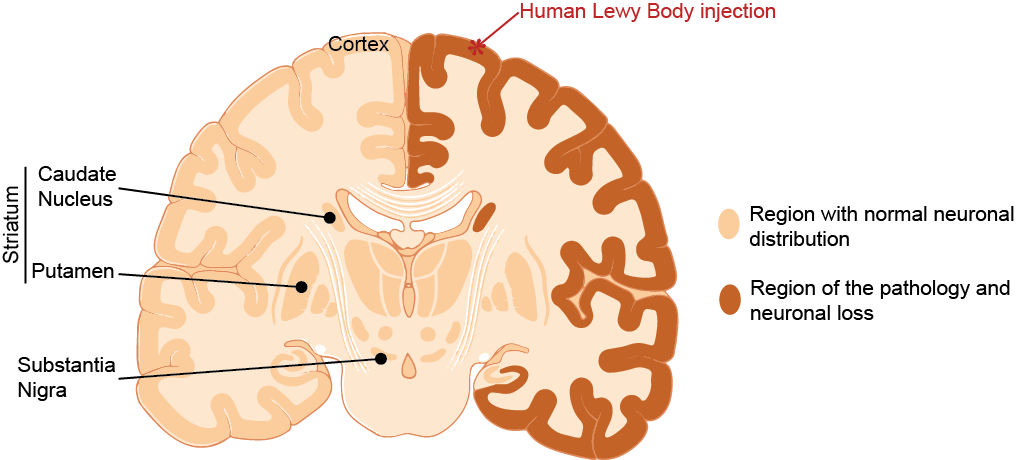Pilot study sheds new light on Lewy body dementia – Press Release – Oct.23

A new study has provided a better understanding of the mechanisms underlying neurodegenerative diseases, in particular synucleinopathies such as Parkinson’s disease (PD) and Lewy body dementia (LBD). Conducted by a consortium of researchers from the University of Bordeaux (France), the University of San Pablo in Madrid, the University of Barcelona and the University of Murcia, this study demonstrates the toxicity of patient-derived extracts, their potential to spread in the brain, and offers a new primate model for MCI.
Aggregation of α-synuclein (α-syn) proteins is an essential factor in synucleinopathies. This study set out to understand the progression of α-syn pathology. It revealed that mesencephalic injections of Lewy bodies (LB) in non-human primates led to a generalised neuronal loss of the prefrontal cortex, an inflammation of this. Same prefrontal cortex and pSyn immunoreactivity one year after intracortical administration. The study also highlighted the spread of α-syn pathology from the cortex to the striatum in non-human primates, reflecting aspects of DLB.
One of the principal investigators, Dr Dehay, notes that “while this proof-of-concept pilot study is encouraging, there are still outstanding questions that need to be studied on a larger number of animals. In particular, it would be necessary to inject fractions of cortical LB to observe the variable cellular vulnerability and the potential for more pronounced pathological effects, while keeping the animals for longer. These results could lead to a better understanding of the spread and toxicity of α-synuclein in a species close to humans and the role of the prefrontal cortex in LB pathology”.
Overall, the results of the study highlight the importance of non-human primates as a crucial test bed for understanding synucleinopathies because of their similarities to humans in terms of brain anatomy and function. The research paves the way for a deeper understanding of the mechanisms underlying α-synuclein-induced cell death, with the aim of identifying biomarkers to improve patient diagnosis and therapeutic interventions at the earliest stages of these devastating diseases.
The teams led by Drs Bezard, Dehay, Obeso, Vila and Herrero are committed to advancing knowledge in the field of neurodegenerative diseases, and this pilot study represents an important step towards unlocking the mysteries of synucleinopathies.
